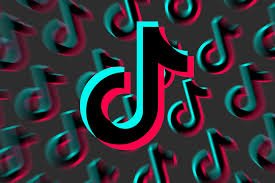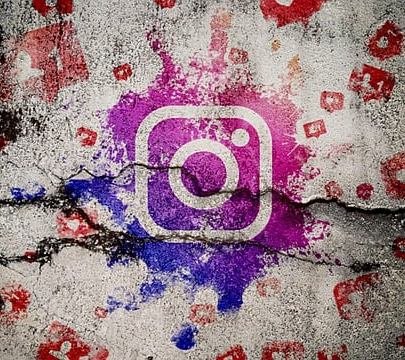
Art has always been a powerful form of expression, but in the digital age, it has found new pathways to shine. Today, art is no longer confined to physical galleries or museums.
Instead, it’s everywhere—on our phones, social media feeds, websites, and even in everyday conversations around the globe. Technology has not replaced art, but rather, it has given it a new life, enabling new formats and providing artists with a wider audience than ever before.
In the past, an artist’s work was often limited by geography, resources, or the physical space available to showcase it. However, now, all you need is an app, an idea, and the freedom to share your creative vision.
The digital revolution has democratized art, making it accessible to everyone, whether they’re viewing it or creating it. Thanks to technology, anyone with a passion for expression can now participate in the creative conversation.
These social media platforms have become essential tools for artists to share their work and engage with audiences. TikTok and Instagram have emerged as the modern-day galleries where art is not only displayed but celebrated and amplified.
📱 TikTok and Instagram: Creative Hubs of the New Generation


TikTok, with its short-form video format, has turned into an incredible space for artists to show how their work comes to life. It allows for an intimate and dynamic look into the creative process, offering a behind-the-scenes glimpse that traditional art spaces never could. This fosters deeper connections between artists and viewers, and makes the creative journey just as captivating as the finished piece.
“Seeing someone like Annie Chen, who creates amazing art but has only around 500 followers, really makes you wonder—does this app actually help with visibility, or is it just a waste of time?”
📸 Instagram: Visual Poetry
Instagram remains the perfect place for artists to display their work through images, videos, text, and atmosphere. It acts as a digital portfolio, an inspiring journal, and a space for dialogue with the audience.

Artists such as @loish, a digital artist/illustrator with a distinctive and enchanting style, and @amandaoleander (illustrator), known for capturing the tender moments of everyday life, use Instagram to communicate not only their art but their philosophies and emotions. Instagram is a digital journal that allows creators to share their work and receive feedback, building a vibrant and interactive community around their creativity.
📲 Best Apps for Artists and Creatives
While TikTok and Instagram are the go-to platforms for artists to share their work, many other apps play a crucial role in the creation process. These tools empower artists to push their creativity to new heights, whether they’re working digitally or seeking inspiration.
What about Pinterest?
My favorite app when it comes to creativity and exploring creative directions is Pinterest. Although it’s mostly focused on images rather than video content, it still gives me a strong sense of personal connection. Unlike many other platforms, Pinterest feels more like a space for individual inspiration rather than a race for fame or popularity. That’s exactly why I like it so much — it’s more about the user and their inner world than about external validation.
Procreate: A favorite among digital illustrators, this app offers a suite of professional tools that allow artists to sketch, paint, and create intricate works of art.
Canva: Perfect for creating eye-catching visuals, posters, and even motivational quotes, Canva has become a go-to for creatives who need fast, easy-to-use design tools.
Pinterest: A treasure trove of inspiration, Pinterest allows artists to find ideas and share their own creations with like-minded individuals.
Behance: This professional platform is ideal for building portfolios and showcasing creative projects, making it an essential tool for anyone looking to establish themselves in the creative industry.
VSCO and Lightroom Mobile: These photo editing apps are perfect for artists looking to experiment with light, color, and mood to elevate their images.
These tools enable artists to create, enhance, and share their work seamlessly, fostering an environment where creativity can flourish without limits.
💛 Technology as an Ally to Art
There’s often a misconception that technology diminishes the soul of art. But in reality, technology does not replace the artist’s heart and vision. It merely provides new mediums and techniques for artists to explore and express themselves. Whether it’s through digital painting, 3D modeling, video art, or music production, technology is an extension of the artist’s creativity—it gives their work wings to reach a larger, more diverse audience.
The digital age has also made art more interactive. Artists can now engage with their audience in real-time, responding to comments, collaborating with other creators, and incorporating feedback into their work. It’s a two-way conversation that fosters connection and innovation, breaking down the barriers between the artist and the viewer.
🌍 Art that Spreads Light. Or does it really?
In a world that often feels overwhelming and noisy, art offers clarity, calm, and meaning. It reminds us of the power of human expression—and how much we need it. Through digital mediums, artists continue to share beauty, humor, truth, and emotion. A simple image or video can still brighten someone’s day.
Yes, social media gives art reach—but let’s not pretend it’s a perfect platform. It rewards trends, algorithms, and constant output over depth and originality. Still, for all its flaws, it remains a place where your work can be seen—if you choose to share it.
📌 Conclusion: Your Work Deserves the Light
You don’t need permission to call yourself an artist. If you create, you’re already part of a global, ever-evolving movement. Whether you write, sketch, film, or design—share what’s real. Not for likes, but because your voice matters.
Create honestly. Share wisely. The right people will find you.
